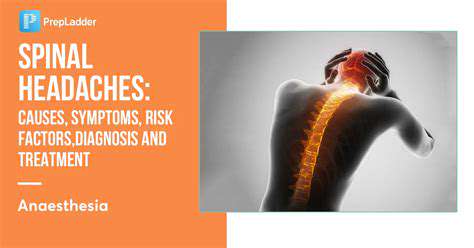Post-dural puncture headache (PDPH) is a frequent complication following lumbar punctures, a procedure widely used for diagnostic and therapeutic purposes. Grasping the root causes is essential for effective treatment and prevention. The escape of cerebrospinal fluid (CSF) through the puncture site stands as a primary driver behind PDPH. This leakage disrupts the delicate pressure balance in the spinal column, resulting in reduced CSF volume and subsequent headache symptoms.
Multiple elements contribute to this condition. The puncture site's size and location, combined with the patient's unique anatomy, influence CSF leakage. Additionally, the procedure's speed and technique, including the clinician's expertise, can elevate the risk of developing PDPH.
The Role of Cerebrospinal Fluid (CSF) Pressure
Cerebrospinal fluid (CSF) serves as a protective buffer for the brain and spinal cord, maintaining stable pressure in the central nervous system. A sharp decline in CSF pressure post-dural puncture is a major factor in PDPH onset. This pressure drop creates a vacuum effect, stretching and irritating the meninges—the protective membranes enveloping the brain and spinal cord.
The resulting pain signals trigger the headache. The body's efforts to replenish lost CSF volume and stabilize pressure are intricate and may exacerbate discomfort.
Individual Patient Factors
Certain patient-specific traits can heighten PDPH likelihood and severity. Pre-existing conditions like dehydration or blood pressure irregularities may increase vulnerability. Post-procedure activity levels and positioning also significantly affect headache development and intensity.
Age and overall health status further complicate recovery, as they impact the body's capacity to compensate for CSF loss. Genetic factors and individual pain tolerance thresholds might also contribute.
The Timing and Duration of the Headache
Post-dural puncture headaches typically emerge within hours to days after the procedure. Duration varies widely, from a few days to several weeks. Prompt identification and proper intervention are crucial to prevent extended suffering. Delayed recognition or treatment may lead to more serious complications.
Treatment Options and Prevention Strategies
PDPH management often includes bed rest, increased fluid intake, and analgesic medications. In persistent cases, an epidural blood patch—where autologous blood is injected near the puncture site—can effectively seal the leak and restore CSF pressure. These approaches aim to alleviate pain and support recovery.
Preventive measures emphasize meticulous technique during lumbar puncture. Careful site selection, appropriate needle size, and precise closure methods are vital for minimizing CSF leakage risk. Such precautions are fundamental for ensuring patient comfort and safety.
Long-Term Implications and Complications
While most PDPH cases resolve without lasting effects, some patients experience persistent or recurring headaches that disrupt daily life. Close monitoring is essential to identify any chronic issues and provide appropriate follow-up care.
Rarely, severe complications like meningitis or neurological problems may develop, typically associated with prolonged PDPH cases. Early detection and treatment are paramount for preventing these serious outcomes.
